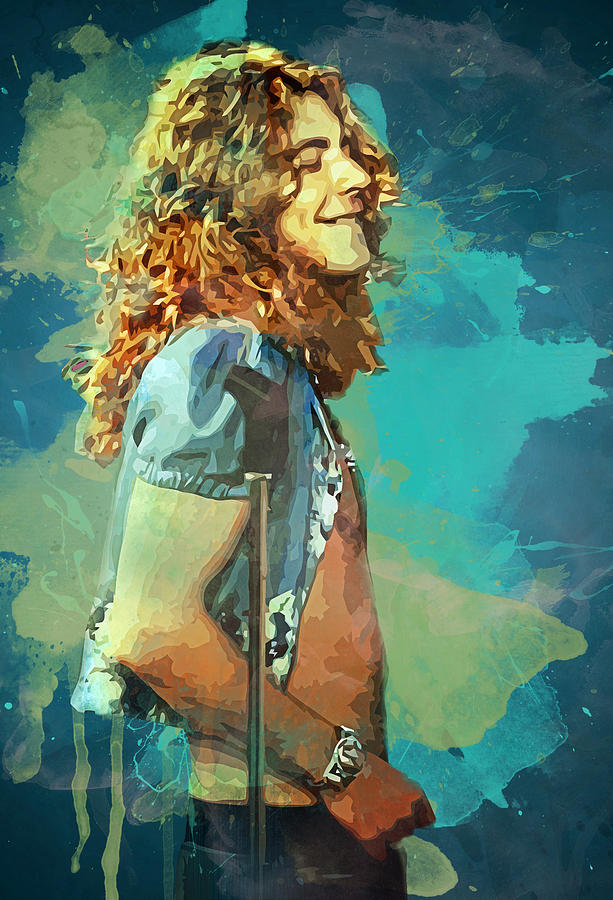

Behind the front cover was a rotatable laminated card disc, or volvelle (a wheel chart), covered with more images, including photos of the band members, which showed through holes in the sleeve moving an image into place behind one hole would usually bring one or two others into place behind others.ģ: Untitled (aka ‘Led Zeppelin IV’) (1971) The cover and interior gatefold art consisted of a surreal collection of images on a white background, many of them connected thematically with flight or aviation.
#LED ZEPLIN ART SERIES#
A graduate of London’s Royal Academy Of Arts and later a lecturer at Leeds University, Zacron met Led Zeppelin’s four members individually, early in 1970, and devised a collage for Led Zeppelin III based on a series of photographs he took of the four musicians. Led Zeppelin III’s original vinyl edition was packaged in a gatefold sleeve with an innovative cover, designed by Zacron (aka Richard Drew): a multimedia artist whom Jimmy Page had met in 1963 while Zacron was a student at Kingston College Of Art. The artwork also pictured the outline of a zeppelin on a brown background (similar to the cover of the band’s self-titled debut album), which gave rise to the record’s nickname, “The Brown Bomber”.
#LED ZEPLIN ART CRACK#
This crack squadron were led by Manfred Von Richthofen, better known as the Red Baron and considered the war’s ace-of-aces, with 80 air combat victories to his name.įor Led Zeppelin II, however, Juniper removed the faces of The Flying Circus and replaced them with those of the four bandmates, along with the faces of Led Zeppelin’s manager, Peter Green, their long-term tour manager, Richard Cole, and blonde-haired French actress Delphine Seyrig in her role as Marie-Madeleine in the film Mister Freedom, a leftist anti-war satire by William Klein. Designed by artist David Juniper, the artwork was based on a famous photograph of the Jagdstaffel 11 Division of the German Air Force during World War I, otherwise known as The Flying Circus. In one sense, Led Zeppelin II stands apart among the best Led Zeppelin album covers, in that it was the only one to feature the band – albeit in a rather doctored fashion. Photographer: Sam Shere | Designer: George Hardie During the band’s 1970 Scandinavian tour, aristocrat Eva Von Zeppelin (a relative of the creator of the Zeppelin aircraft) threatened legal action and the band were forced to play in Copenhagen under the pseudonym of The Nobs. Though it represents one of the best Led Zeppelin album covers, the artwork also attracted some controversy. This was taken by Jimmy Page’s former Yardbirds bandmate Chris Dreja, who pursued a career in photography after The Yardbirds split in 1968. Atypically, the album’s back cover actually carried a traditional group shot of the band. Though based upon Sam Shere’s famous photograph of the 1937 Hindenburg airship disaster, the image was treated by Hardie, who rendered the original black-and-white photograph in ink using a Rapidograph technical pen and a mezzotint technique. Led Zeppelin’s longtime collaboration with illustrator and graphic designer George Hardie began with the iconic sleeve housing their debut album. The enigma factor again worked in the design team’s favour with Presence: cementing its place among the best Led Zeppelin album covers, Hipgnosis and Hardie were nominated for a Grammy Award for Best Album Package in 1977. The girl on the back cover photo was Samantha Gates, who had previously appeared with her brother on the band’s Houses Of The Holy artwork.
#LED ZEPLIN ART ARCHIVE#
The artwork’s inner sleeve photographs, meanwhile, were sourced from a variety of archive stock pictures, and were put together as if designed for a feature in National Geographic magazine. The background in the cover photograph was an artificial marina, installed in London’s Earls Court arena for the annual Boat Show, in the winter of 1974-1975. Thorgerson later elaborated further on the concept by saying that it represented the power of Led Zeppelin, as their music was “so powerful, they didn’t need to be there”. However, according to Hipgnosis’ Storm Thorgerson – who designed the cover along with George Hardie – “The Object” was intended to represent Zeppelin’s “force and presence”. Many fans still believe the curious black obelisk-shaped object Led Zeppelin used for the cover of Presence (referred to simply as “The Object”) was a spoof on the monolith from Stanley Kubrick’s influential 2001: A Space Odyssey.


 0 kommentar(er)
0 kommentar(er)
